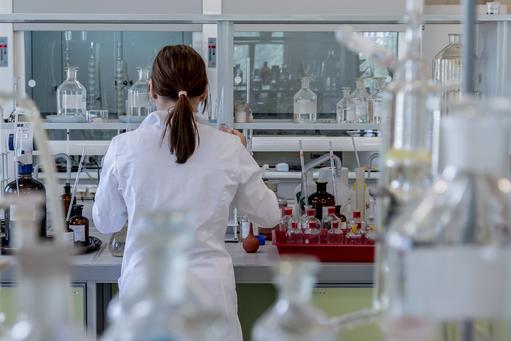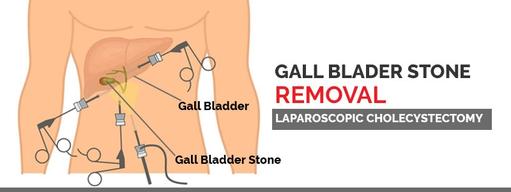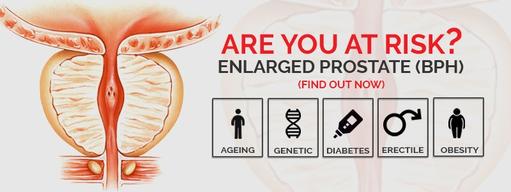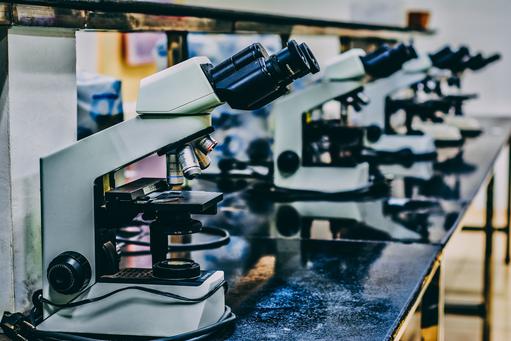- Life-changing eating disorders are increasing, and their causes are assumed to be more about emotional and psychological challenges than food
- For 60 years the global fashion industry has encouraged teenage girls and young women to emulate an unrealistic ‘thin ideal’ body image
- As social media became the principal means for young people to communicate and receive information, so billions of fashion advertising dollars migrated to social media to propagate the ‘thin ideal’
- Although nearly a third of the world’s population participate in social media and a significant proportion are “extreme” daily users, the mechanisms of social media and their effect on young peoples’ mental health are not fully understood
- Notwithstanding, there is a growing body of evidence suggesting that the more time people spend on social media the greater is their likelihood of developing mental ill-health and eating disorder
Is social media an accelerant for life-threatening eating disorders?
A May 2018 Brooking’s Institute research paper suggested that social media has become a significant mechanism for spreading and reinforcing misinformation - fake news - which can influence and disrupt democratic political processes and thereby are a threat to 21st century democracy. Similarly, we contend that misinformation about body images, diets, lifestyles and beauty distributed on social media could be an accelerant for teenage and adolescent girls to engage in life-changing disordered patterns of eating to achieve an unrealistic body image.
A September 2018 report by Sky News UK suggested that entities, which actually promote eating disorders and unhealthy and dangerous attitudes towards food and body image were not picked-up by Instagram, an online photo-sharing app with 1bn active monthly users. Daniel Magson, vice chair of Anorexia & Bulimia Care, a charity, suggested that Instagram is "not a safe space” because it hosts communities, which promote, “the best ways to injure or self-harm,” and recommend “the best places to dine with private toilets for afterwards”.
A 2017 survey of 1,500 14 to 24 year-olds in the UK carried out by the Royal Society for Public Health (RSPH) rated Instagram the worst social media site for young people’s mental health, and suggested that, "social media may be fuelling a mental health crisis" in young people. Shirley Cramer, the CEO of the RSPH, said: "It's interesting to see Instagram and Snapchat (another photo sharing app with 191m active daily users) ranking as the worst for mental health and wellbeing; both platforms are very image-focused.” Instagram is addressing the issue and recently announced that it is doubling the number of people working across safety and security teams for Facebook and Instagram to 20,000 by the end of 2018, which includes a team of 7,500 content reviewers (Facebook acquired Instagram in 2012 for US$1bn, 18 months after its launch).
In this Commentary
This Commentary:
1. Describes common eating disorders
2. Provides a brief analysis of the incidence, distribution and determinants of eating disorders
3. Explains the genesis of the ‘thin ideal’ and how it has become an unrealistic body image, which the fashion industry encourages young people to emulate
4. Provides a short historical description of Western social media and notes that although it has rapidly become a global phenomenon the mechanisms that drive it are not widely understood
5. Explains some of the hidden mechanisms how social media may affect a user’s perceptions of themselves and influence their behaviour
6. Provides a brief selective summary of the growing body of research, which reports “extreme” use of social media by teenager girls and young women and the rise in incidence rates of mental ill-health and eating disorders in this cohort
7. Describes how the fashion industry was quick to realise the significance of social media as a cost-effective means to influence the opinions and purchasing behaviour of teenage girls and young women and shifted billions of marketing dollars away from traditional content providers to social media platforms to promote the ‘thin ideal’
8. Suggests that longitudinal studies are necessary in order to increase our understanding of the association between multifaceted eating disorders and social media
9. Concludes that social media was a communications revolution that promised to increase interactions and flows of information and knowhow between millions of dispersed people and lower cultural, religious and regional divides. On one level it achieved this. But as social media developed and was better understood, so it was realized that social media could also be used as an agent for misinformation – fake news - and to encourage discordant behaviour. And therefore, social media could become an accelerant for mental ill health and life-threatening eating disorders.
1
Eating disorders
Almost everyone worries about their weight occasionally. Abnormal eating disorders are when individuals take such concerns to extremes and obsessively focus on their weight, body shape and food and this can threaten their health, emotions and their ability to function in important areas of life. The most common eating disorders are: (i) anorexia nervosa, which is a serious, potentially life-threatening illness where individuals often equate thinness with self-worth; think they are fat even when they are dangerously thin, and restrict eating to the point of starvation, which leads to extreme weight loss and a low body mass index (BMI) 2, (a BMI of between 18.5 kg/m2 and 24.9 kg/m2 is considered a healthy range for young women); (ii) bulimia nervosa: is when individuals eat excessive amounts of food, then purge, which may include self-induced vomiting, abuse of laxatives, diuretics, diet pills, appetite suppressants or other stimulants; and (iii) binge eating, which is when individuals regularly eat too much food (binge) and feel a lack of control over their eating, but they do not purge. Two further eating disorders, which are growing in significance, but as yet, are not officially recognised as medical conditions are orthorexia and drunkorexia. The former is when individuals want to live healthier lives by eating well, but then get so obsessed with “healthy” food that they become unwell and socially isolated. The latter is a condition where individuals use extreme weight control methods as a means to compensate for planned binge drinking.
2
Epistemology
Before 2000 the overall incidence rates of eating disorders were relatively stable for a few decades. But following the introduction and spread of social media there was a hike in the incidence rates, especially among Western teenage girls. However, it is not altogether clear whether this is due to an increase in eating disorders or the result of more effective diagnoses and a greater awareness of the conditions.
The US National Eating Disorder Association, estimates that there are some 70m people worldwide with eating disorders and about 30m in the US. A 2017 US National Institutes of Health report suggests that between 2001 and 2003 the lifetime prevalence of anorexia nervosa in American adults was 0.6%, and 3-times higher among females (0.9%) than males (0.3%). The prevalence of bulimia nervosa was 0.3%; 5-times higher among females (0.5%) than males (0.1%), and the overall prevalence of binge eating was 1.2% and twice as high among females (1.6%) than males (0.8%).
A 2013 report from the UK’s Joint Commissioning Panel for Mental Health suggested that there are over 1.6m people in Britain with eating disorders, but this is likely to be an underestimate since a significant proportion of people with such disorders do not seek help. The UK’s Department of Health suggests that a more likely figure is about 4m. Information provided by The Priory, a private hospital group specialising in mental health, suggests that 1% of all women aged between 15 and 30 in the UK are affected with anorexia nervosa, 40% of people with eating disorders suffer from bulimia, and the people most affected with eating disorders are females between 11 and 25.
The exact causes of eating disorders are not well established, but a significant body of opinion suggests that they are not about food, but more to do with unhealthy and sometimes life-threatening ways to cope with emotional problems. In parallel with these psychological explanations there is research to suggest that eating disorders have either genetic or biological causes associated with 2-way communications between the gut and the brain through both nerve connections and biochemical signals. A recurring theme shared by people with all types of eating disorders is an expressed or implied dissatisfaction with their body image and their aspiration to achieve the “thin ideal”, which is a concept that has been propagated by the fashion industry for the past 60 years.
3
The thin ideal
Over time what has generally been accepted as a beautiful body has changed. In recent history, the biggest change occurred in the I960s when thinness and the absence of a figure became a body image propagated by the global fashion industry as an ideal for teenage girls and young women to emulate. This was personified by Lesley Lawson, an English model known as “Twiggy”, who had a slim androgynous look and a body mass index (BMI) of 15 kg/m2, (a BMI under 18.5 kg/m2 is considered malnourished). Twiggy replaced the notion of a beautiful woman as full-figured and gave birth to the “thin ideal”. In the 1970s diet pills and amphetamines became widely used to suppress appetite in order to cultivate the thin ideal. The 1980s was the decade of the supermodel when the thin ideal became even thinner, and about the same time anorexia nervosa began to receive mainstream medical attention. Notwithstanding, in the 1990s the ideal body for young women became an extremely thin look with big breasts, and by the end of the 90s the fashion industry propagated a “heroin chic” look, which was characterised by a skeletal body, emaciated features, androgyny, red lips and dark circles under the eyes. Thus, for the past six decades the body shape of the “most admired” models, which fashion advertising encouraged young girls to emulate, has remained consistently slimmer than that of the average western woman. However, at the end of the 1960s there was a “hippie” era when, for a relatively short period, a more full-figured look returned, and more recently there have been movements towards a more realistic standard of beauty. Notwithstanding, the thin ideal persists and continues to affect teenage girls and young women who emulate this unrealistic body image and become preoccupied with their weight and size, which some control by various unhealthy means and this results in anxiety, negative body image and dieting to below their natural body weight.
4
Social media
Over the past decade, as social media has become the primary means by which young people communicate, share and receive information, so the fashion industry has increasingly used social media to propagate the thin ideal. Social media is comprised of a collective of websites and applications, which enable users to create and distribute content and to interact and collaborate with friendship groups. Social media’s power and influence is significantly related to the number of users, its penetration and the regularity of usage. By the end of 2019 it is projected that there will be around 2.77bn social media users worldwide and 3bn by 2021, which equates to about a third of the world’s population. Social media’s global penetration is increasing: in 2017, 71% of internet users were social media users. Recent studies - see section 6 below - suggest that there is an increasing proportion of “extreme users” who spend up to 8 hours a day on social media.
A brief history of social media
Here we provide a brief and partial history of Western social media platforms. Social media started in 1997 with Six Degrees, which was an online platform that enabled users to upload their profile and share it with friends. MySpace followed in 2003 and was acquired 2 years later by News Corporation for US$0.58bn. At its peak in 2008, MySpace was the world’s most visited social media site with 76m unique monthly visitors. LinkedIn, a business and employment networking platform was also founded in 2003 and today has some 0.5bn registered members in 200 countries, 106m of whom are active. Facebook launched in 2004, has become the world’s most widely used social media platform with some 2.23bn active monthly users. 76% of Facebook users are female. In 2012 it was estimated that 83m Facebook accounts were bogus, (for relevance see discussion on ‘social bots’ in section 5 below). YouTube founded in 2005, is a global video sharing platform featuring a wide variety of user generated and corporate media content and is now the world’s 3rd most visited site after Google, the world’s most used search engine. Every minute some 400 hours of video are uploaded onto YouTube, each day people watch 1bn hours of videos, more than half are watched on a mobile device and the average viewing session lasts 40 minutes. Reddit, founded in 2005, is a social media forum where content is socially curated and promoted by users through voting. It was acquired by Condé Nast in 2006 for an undisclosed amount between US$10 and US$20m but is now independent. As of February 2018, Reddit had 542m active monthly visitors. Twitter, an online news and social networking site launched in 2006 has some 328m monthly active users. Tumblr, founded in 2007 and acquired in 2013 by Yahoo! for US$1.1bn, is a microblogging and social networking website. As of 2017, Tumblr had almost 738m unique visitors globally and generated over 148bn posts. Instagram a photo and video-sharing social media network was founded in 2010, acquired by Facebook in 2017 for US$1bn, and has 1bn monthly active users. Snapchat, a multimedia messaging app launched in 2011 has some 188m active daily users sharing over 400m photographs every day. Facebook, Instagram and Snapchat are the most popular social media sites.
5
Hidden mechanisms that drive social media
Human biases
Social media encourages users to constantly compare and judge their bodies with that of the thin ideal of “friends” and “celebrities” they follow. Cyberbullies and body shamers, can relatively easily use social media to infiltrate an individual’s private space and daily life. They may then constantly post information, which can affect that individual feeling inadequate about themselves and their body image. Social media postings can be 'shared', 're-tweeted', 'liked', copied and end up 'going viral'. Where a posting is defamatory, the damage done can be significant. Cyberbullying is a form of wilful and repeated harm, which is inflicted through the use of social media and is often directed at a user’s body image and appearance. Shamers are people who use social media to publicly mock or criticize someone for a particular aspect of their appearance or behaviour and makes them feel either humiliated or ashamed.
Females under 25, are predisposed to perceive what they see on social media as reality despite the fact that many images could have been altered and information might be fake. Social media differs from traditional mediabecause it is a distributor of content and not a publisher. This means that social media platforms are not regulated in the same way as traditional media outlets, which suggests that misinformation can be spread unimpeded. Individuals tend to pay more attention to information that supports their previously held beliefs and are more prone to share such information even if it is false. Further, individuals have different tolerance levels towards the ambiguity of information and have an innate desire to minimize uncertainty. Social media provides a means to do this. Users can use the “like”, sharing and friendship functions to give precedence to information that accords with users’ perceptions of self, body image and beauty etc. This tends to narrow the scope of information, which individuals receive, and therefore users of social media are often unaware of competing perspectives. Thus, social media can have the effect of segregating people into virtual communities of likeminded individuals, which makes them potential targets of specific marketing endeavours seeking to influence their behaviour.
Social media and Al
The behaviour of social media users is also influenced by deep learning algorithms. Originally social media used artificial intelligence (AI) to forward information chronologically. Now algorithms are taught to identify information, which already has significant engagement among friendship groups and then to distribute that information to millions of like-minded users, who, in turn share it with their friendship groups, which then is identified again by algorithms and distributed even further and so on and so forth. This creates a significant ‘cycle of influence’, which can be used to effectively spread messages and body images to people predisposed to such information and is a gift to marketers who can use such mechanisms to influence peoples’ beliefs and behaviours at zero cost. Marketing firm Tribe Dynamics has developed a metric called “Earned Media Value” (EMV), which measures the marketing revenues saved through such social media promotional endeavours. It seems reasonable to suggest that such cycles of influence could transform social media platforms into agents for establishing and confirming user biases towards body images, diets and lifestyles just as fake news can influence peoples’ political beliefs and behaviours.
Social bots
Bots are automated software applications. Social bots, with fake identities, control social media accounts and trick legitimate users that they are real human beings and they then automatically generate and spread images and information at a much higher rate than any human. This can significantly affect users’ opinions and behaviours. Although illegal, social bots are provided as a service by marketing companies. Celebrities use them to boost their social media images and make them appear to have many more followers than they actually do; and this can legitimize them being social influencers. Social bots are most common on Twitter, but they are also used on other social media platforms. For instance, as mentioned above, Facebook is reported to have some 83m fake accounts. What differentiates social bots from other forms of malware is the fact that they specifically exploit social media’s trust factor to join networks and friendship groups so that they can influence users’ opinions and behaviours. Social media platforms are beginning to employ neural networks to identify social bots and close them down, but still they persist.
Users’ naivety
A significant proportion of social media users do not understand the hidden mechanisms used to influence an individual’s opinions and behaviours. While most social media users understand that not all information they find online is truthful, a 2018 study by the UK government’s telecommunications regulator Ofcom suggests that 10% of social media users do not think about whether the “factual” information they find is truthful, and 23% do not make any checks on the trustworthiness of the content on social media. Although 54% are aware of how search engines are mainly funded, 18% give an incorrect response, and almost 28% do not know. Only 48% of search engine users are able correctly to identify advertising on Google, despite it being identified by a box with the word “Ad” in it, and just under 18% think that if something has been listed by a search engine it must contain accurate and unbiased information, although this figure has decreased since 2016, when 21% thought so.
6
The evidence
“Extreme” users
It is well-established that teenagers and young adults spend a significant amount of time on social media and increasingly less time with traditional media such as TV, magazines and newspapers. According to Statista, in 2017, the average daily usage of social media worldwide amounted to 135 minutes, up from 126 minutes in 2016. Teenagers and young adults in the US and UK spend an average of 170 and 180 minutes a day respectively on social media. The 2018 Ofcom report, mentioned above, suggests that 6% of British children between 12 and 15 are “extreme users” of social media and spend up to 8 hours a day online at weekends, and this could negatively affect their mental health. Findings further suggest that during the week 1% of this cohort spends more than 8 hours a day on social media, 4% more than 6 hours and 11% between 4 and 8 hours. The report concludes that social media use in the UK is almost universal: 98% of 16 to 24-year-olds use social media as do 96% of those between 25 and 54.
Eating disorders
A 2011 study by researchers from the University of Haifa, Israel, examined 248 young women between 12 to 19 and found that more exposure to social media contributed to higher rates of eating disorders and related concerns. Specifically, the more time they spent on social media, the more likely they were to struggle with “…bulimia, anorexia, physical dissatisfaction, negative physical self-image, negative approach to eating and more of an urge to be on a weight-loss diet.”
Mental ill health
A July 2015 paper published in Cyberpsychology Behavior and Social Networking, suggests a significant correlation between time spent on social media and experiences of high levels of psychological distress and suicidal ideation. Findings show that students with poor mental health spend longer on social media. An association between time spent on social media and mental ill-health is also suggested in a 2015 US study by the non-profit group Common Sense Media. Based on a national sample of more than 2,600 young people aged between 8 and 18, findings suggest that teenagers are spending more than 9 hours a day using social media; and children between 8 and 12 nearly 6 hours a day; and that time spent on social media impacts their mental health.
A 2015 report from the UK’s Office for National Statistics suggests that children who spend more than 3 hours a day on social media are twice as likely to report ‘high’ or ‘very high’ scores for mental ill-health. These findings accord with a 2017 study undertaken by Emily Frith for the OECD entitled Social Media and Children’s Mental Health. Frith’s findings suggest that there is a significant correlation between time spent on social media and mental ill-health: 37% of British 15-year-olds are “extreme social media users” spending at least 6 hours a day online and this may have damaging mental health consequences. Further, 18% of extreme social media users in the UK were more likely to report being bullied, which is a contributory factor of mental ill-health.
Cyberbullying and eating disorders
A 2018 UK all party parliamentary inquiry into social media and cyberbullying found that cyberbullying is, “distinct and potent, particularly due to its potential to be relentless". . .and there is an, “association between the time children spend on social media and their emotional well-being . . . . . Children and young people who are currently experiencing a mental health problem are more than three times more likely to have been bullied online in the last year.” The Inquiry also suggests that, “There is a connection between intensive social media use and mental ill-health - 38% of young people reported that social media has a negative impact on how they feel about themselves, compared to 23% who reported that it has a positive impact. This was exacerbated for girls, with 46% of girls stating that social media had a negative impact on their self-esteem.” A 2015 report by the US National Eating Disorders Association found that, “65% of people with eating disorders say bullying contributed to their condition”.
7
The global fashion industry’s advertising dollars
The global fashion industry has a market value of about US$3trn, and employs some 116m people. In recent years, as traditional media declined and social media became the principal way people consumed and shared content, so marketing revenues shifted from traditional content providers to social media. This migration is aided by the increase popularization of mobile telephony and the increasing availability and affordability of mobile internet. eMarketer, a consultancy, estimates that in 2018 US marketers will spend some US$48bn on digital display ads. Social advertising in all formats is gaining traction and will be among the key drivers of digital advertising growth in the next five years. Social advertising revenue is expected to reach US$31bn by 2021, up from US$16bn in 2016.
8
More research needed
We have described some research, which documents the “extreme” use of social media by teenagers and young adults and the rise in incidence rates of mental ill-health and eating disorders. Also, we have described some studies that suggest a significant association between the two variables. Notwithstanding, establishing significance between complex eating disorders and social media remains challenging despite the fact that the incidence levels of eating disorders increased during the period of rapid social media growth. Challenges to establishing significance include: (i) a relative lack of deep understanding of social media and the global fashion industry, (ii) a relative lack of consistent data for long-term time series studies, (iii) the fact that over the past few decades the diagnostic criteria of eating disorders have changed, and (iv) research methods and access to patient mental health data have also changed.
We also have shown that the concept of the thin ideal has been propagated by a media driven celebrity culture over the past 60 years. We describe some of the “hidden” mechanisms and techniques used by social media to spread specific messages in order to influence users’ opinions and behaviours. These, together with: (i) the rapid spread and “extreme” usage of social media and (ii) the fact that billions of marketing dollars have shifted away from traditional media to social networks in order to influence opinions and behaviours, is evidence to suggest that social media could have a significant influence on impressionable young girls’ perceptions about themselves, their body images and encourage them to engage in disorderly eating to reduce their body weight to an unhealthy level.
9
Takeaways
Social media is a communications revolution, which promised unprecedented connectivity and the free flow of ideas and knowhow, which transcends cultural and geographic boundaries and brings greater choice and enhanced freedom to billions of people. There is no better illustration of its power and influence than the Arab Spring, in 2010 when social media was used to instigate the overthrow of numerous dictatorships in various regions of the world. For a short time afterwards, social media appeared to be the gateway to a new era for democracy and freedom of choice. However, none of the spontaneous uprisings fuelled by social media resulted in any discernible long-term benefits. As social media grew so did peoples’ knowledge and understanding of the phenomenon, and so grew concerns that social media could be a two-edged sword with the capacity to damage and harm as well as do good. Social media might well be an accelerant for life-changing eating disorders, but it still has to be proven.
|





















